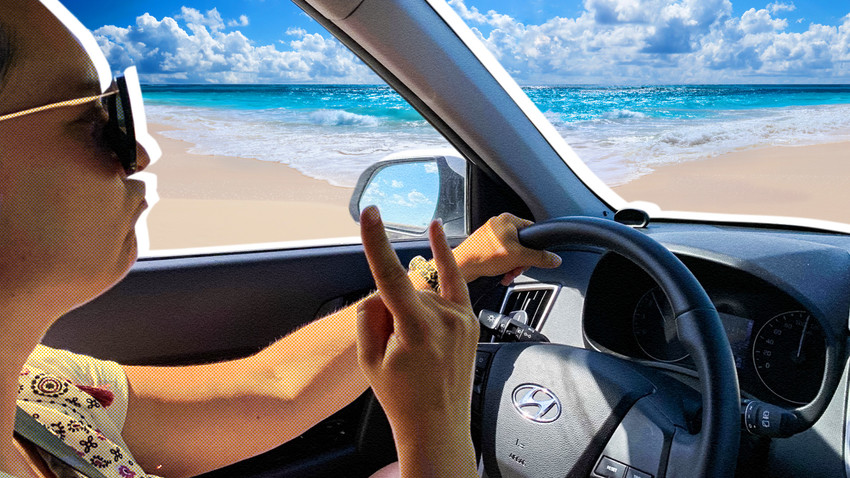
Many Russians discovered the joys of car travel as a cheap alternative for reaching their holiday destinations at the peak of the beach holiday season long before the pandemic. Every year, car travel enthusiasts drive to Crimea, Sochi and other seaside resorts - from Moscow, St. Petersburg and even (oh, horror!) Siberia, covering enormous distances. But it was the coronavirus that made those who previously recognized only air or – at a stretch – rail travel to get behind the wheel, too.
However, for most of them, time spent on the road is literally ticking in their minds as time wasted, as time that they could be spending on the beach. That is why they - like professional long-haul drivers - drive for 12 hours non-stop, then take a quick nap right in the car either on the side of the road or in a parking lot before hitting the road again.
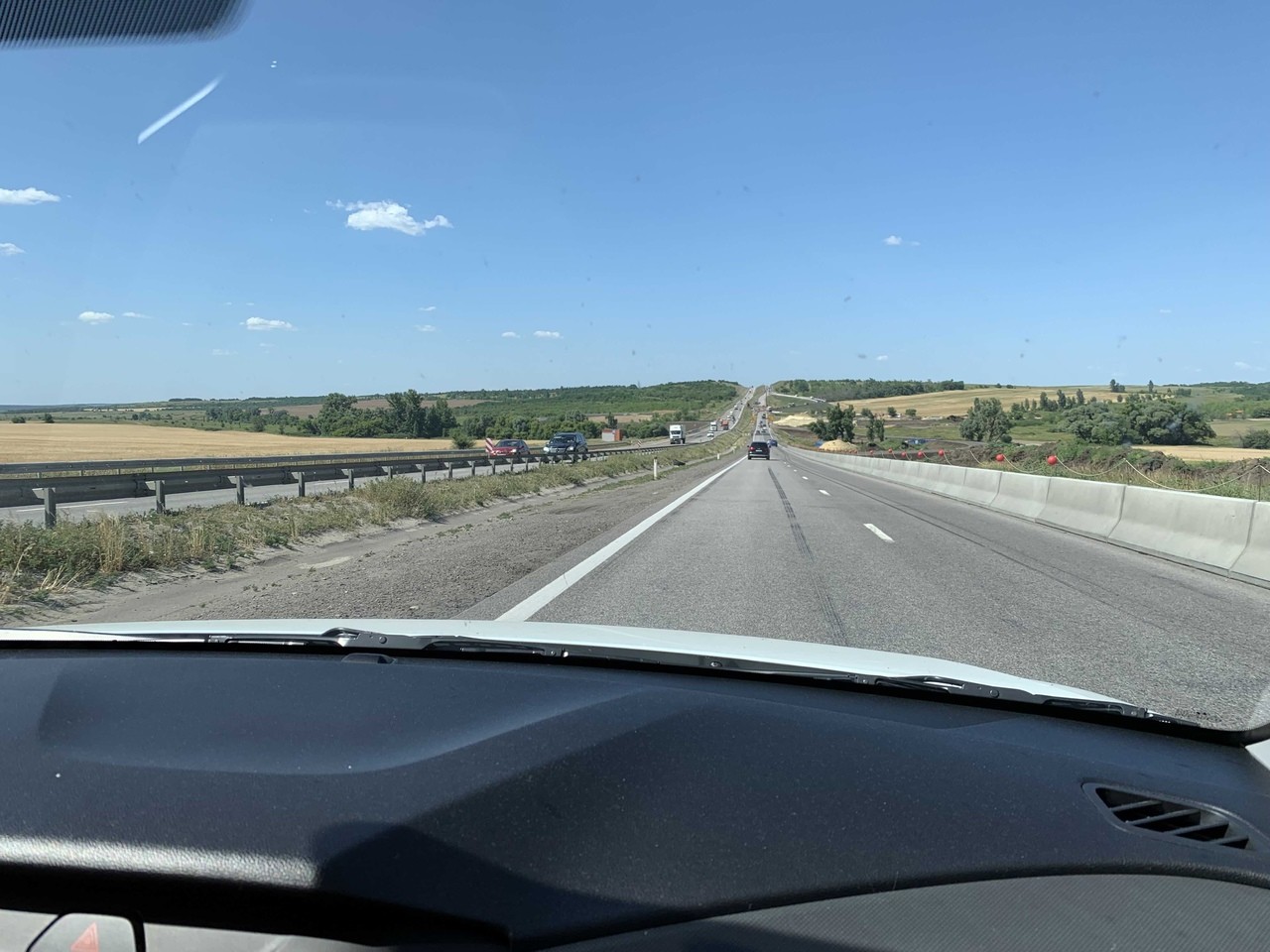
The M4 highway
Alexandra GuzevaI am fond of driving, but not to that extent! That is why I decided not to regret the loss of precious days on the beach and to stop on the way, every time I got tired or bored. Thus, my road trip lasted 12 days! But this long trip to and from the sea has become perhaps one of my best vacations. My boyfriend, who, by the way, does not drive, agrees. But you can judge for yourself.
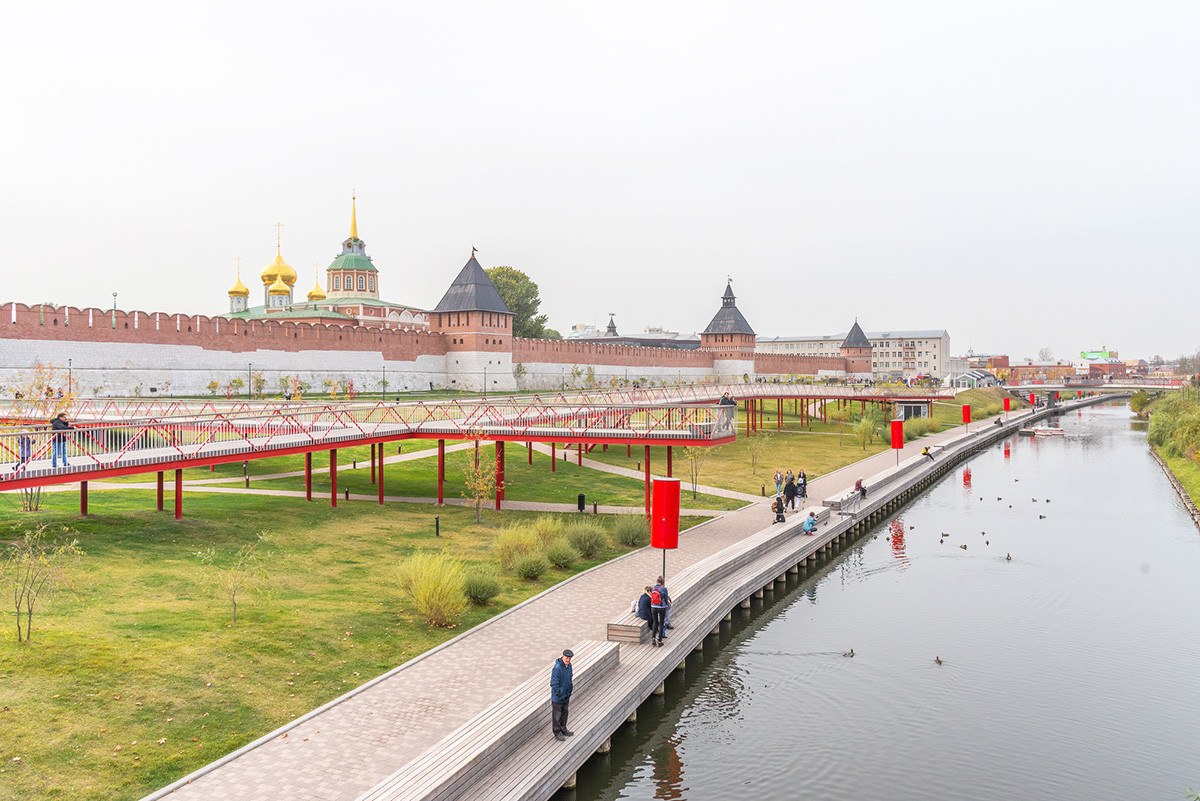
The Upa River embankment and the Tula kremlin
Legion MediaThe first stop from Moscow when you head south is Tula. It is an old city that once even competed with Moscow for the title of Russia’s main city. These days, it is a small and very nice provincial town. It has its own Kremlin and, in addition, is known as the birthplace of Leo Tolstoy. His family estate, where he lived most of his life, is located not far from Tula - in Yasnaya Polyana.
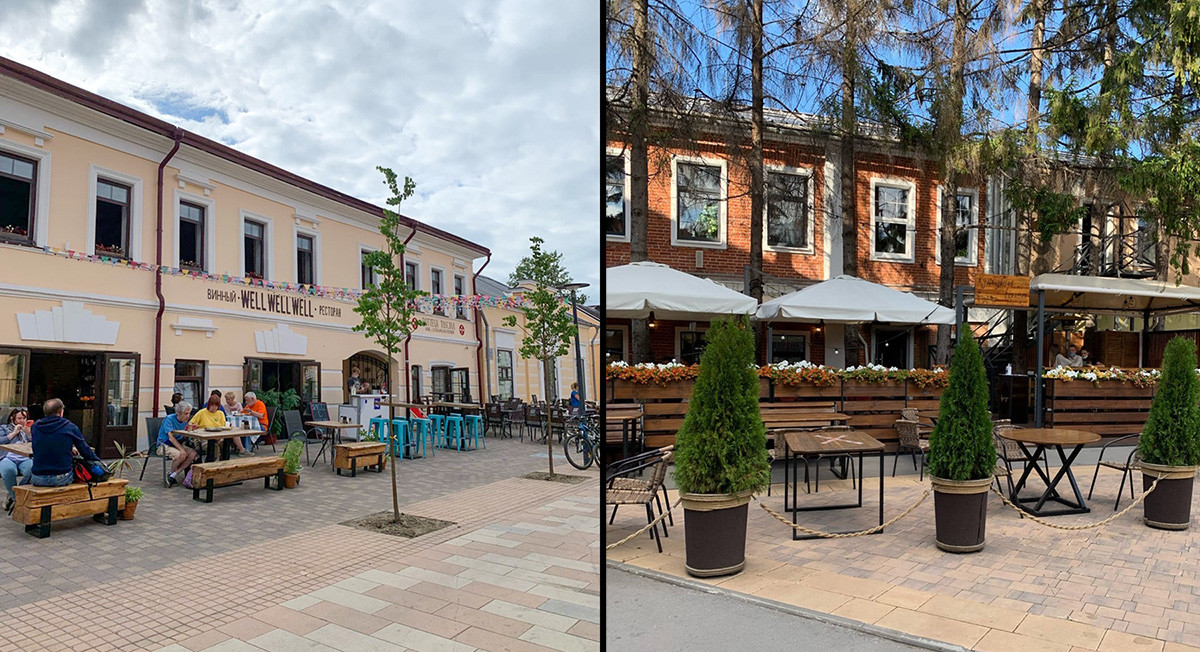
Metallistov St. (L), Iskra gastro-space
Alexandra GuzevaBut what interested us in Tula most was the new embankment of the Upa River. A must for every visitor there is to take a picture on a swing with the Tula Kremlin in the background. After a visit to the Museum of Weapons (whose building resembles a helmet), we went to have dinner at the fashionable gastro-quarter Iskra.
Read more: 5 awesome reasons to visit Tula for the weekend
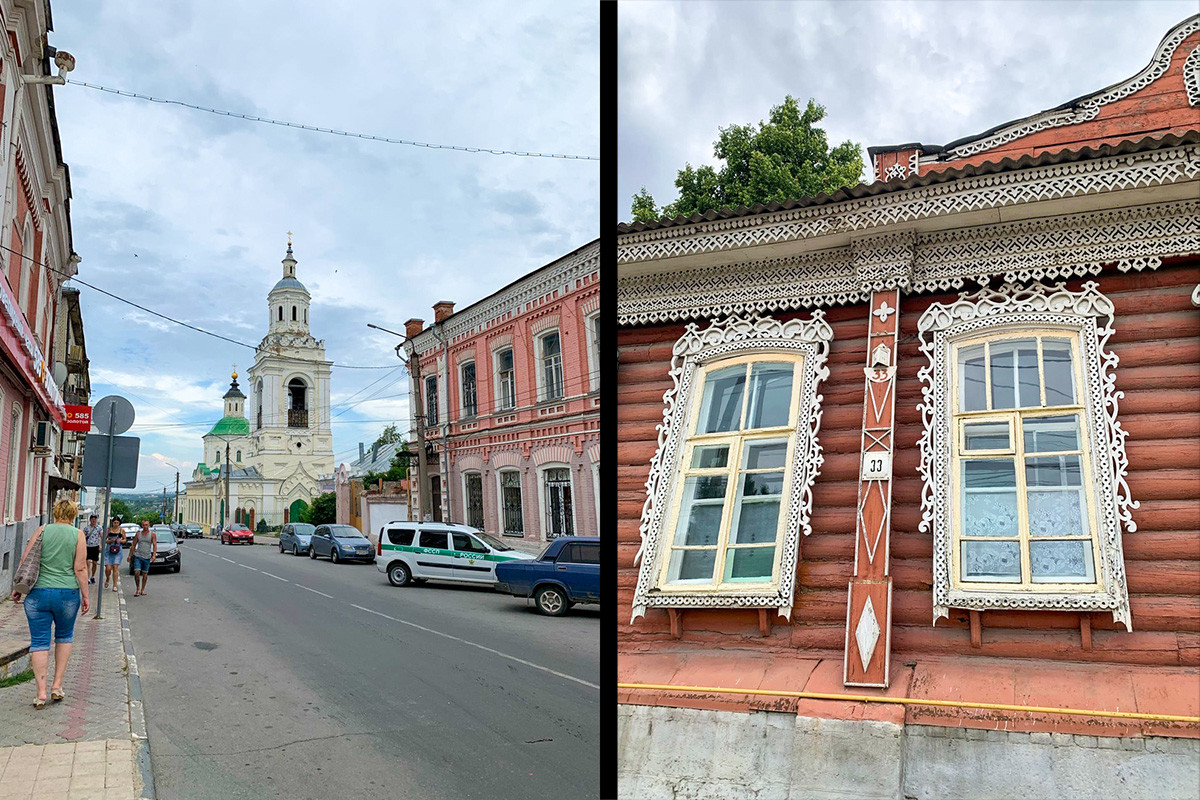
Old wooden houses of Yelets
Alexandra GuzevaI bet you have never even heard of Yelets. Well, it is not very well known to Russians, either. It is a small, very provincial town in Lipetsk Region and with a small population. However, once it was a rich merchant town and it has a well-preserved historical center, many old houses, wooden huts and incredibly beautiful churches.

Inside the Ascension Cathedral in Yelets
Alexandra GuzevaYou can spend a whole day here just wandering the streets and admiring the carved platbands. If you get bored, you can always check out the local park of culture and recreation and enjoy its amusement rides. By the way, you will find parks like this in all provincial towns.
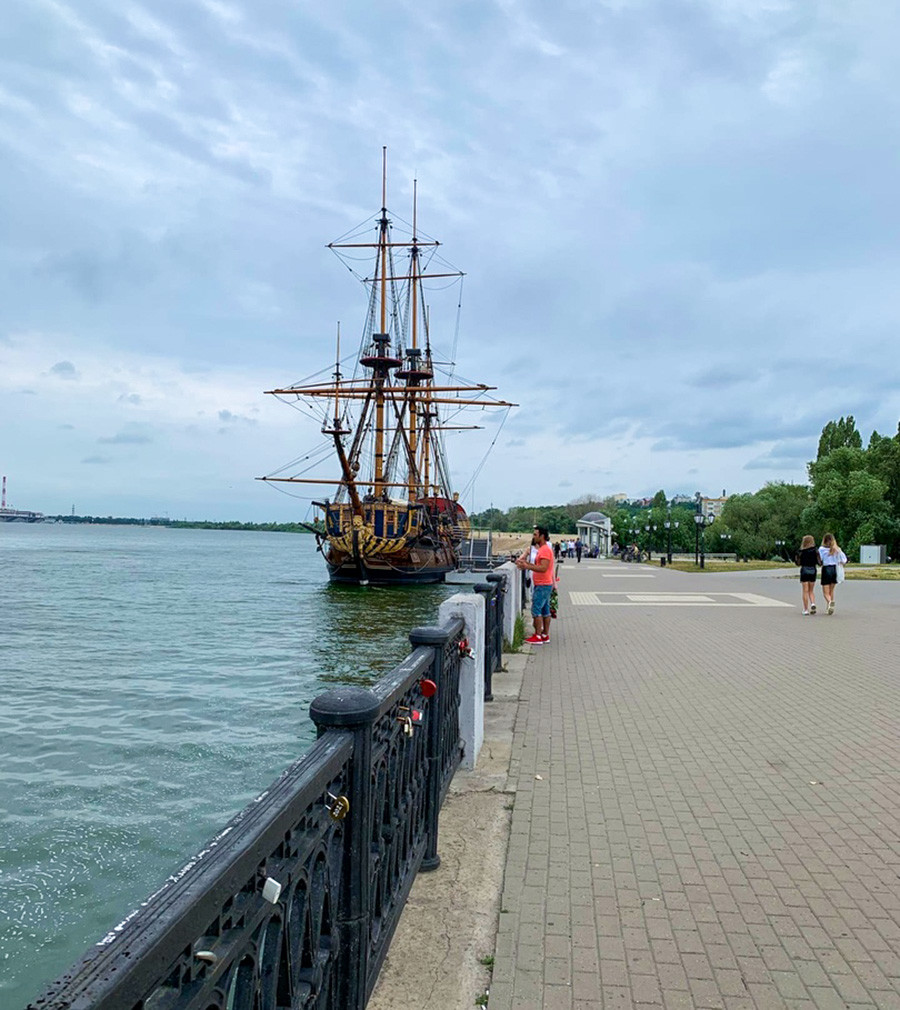
The first battleship of the Russian fleet
Alexandra GuzevaAt first glance, it may seem that Voronezh is an unremarkable industrial center. Indeed, it is not a very popular tourist destination, but it is a city with a million-plus population and, one might say, the cultural and intellectual capital of Russia’s south: It has a university, a theater, and is home to a considerable share of the modern space industry. Also, it is the birthplace of Russian writer and Nobel laureate Ivan Bunin!
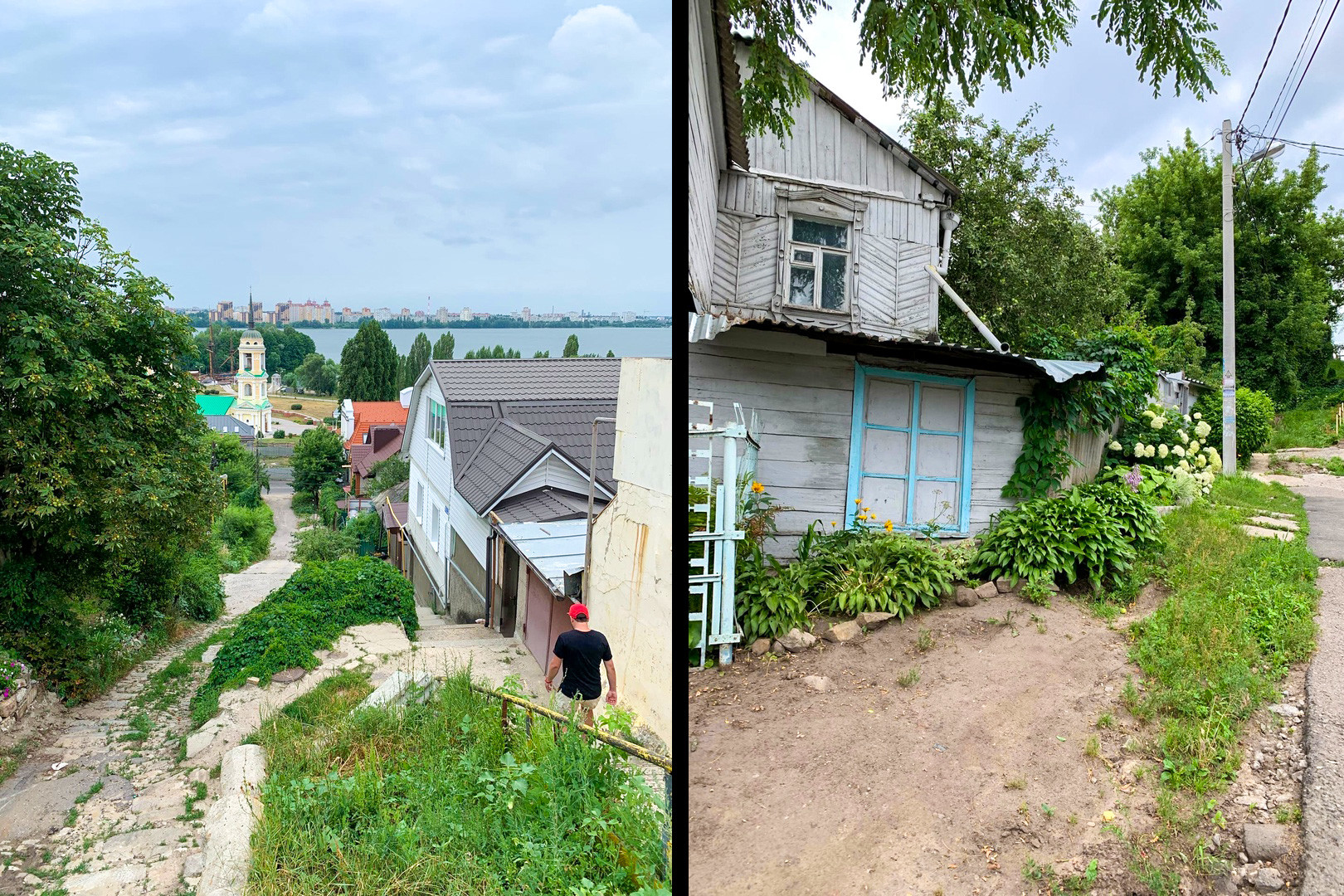
Downhill streets on route to the Voronezh River
Alexandra GuzevaYou can take a very atmospheric walk from the city center to the Voronezh River along steep downhill streets lined by wooden huts and full of content stray cats. On the embankment, there is an old ship - the first battleship of the Russian fleet, which was built at the Voronezh shipyard in 1698 under the supervision of Peter the Great himself!
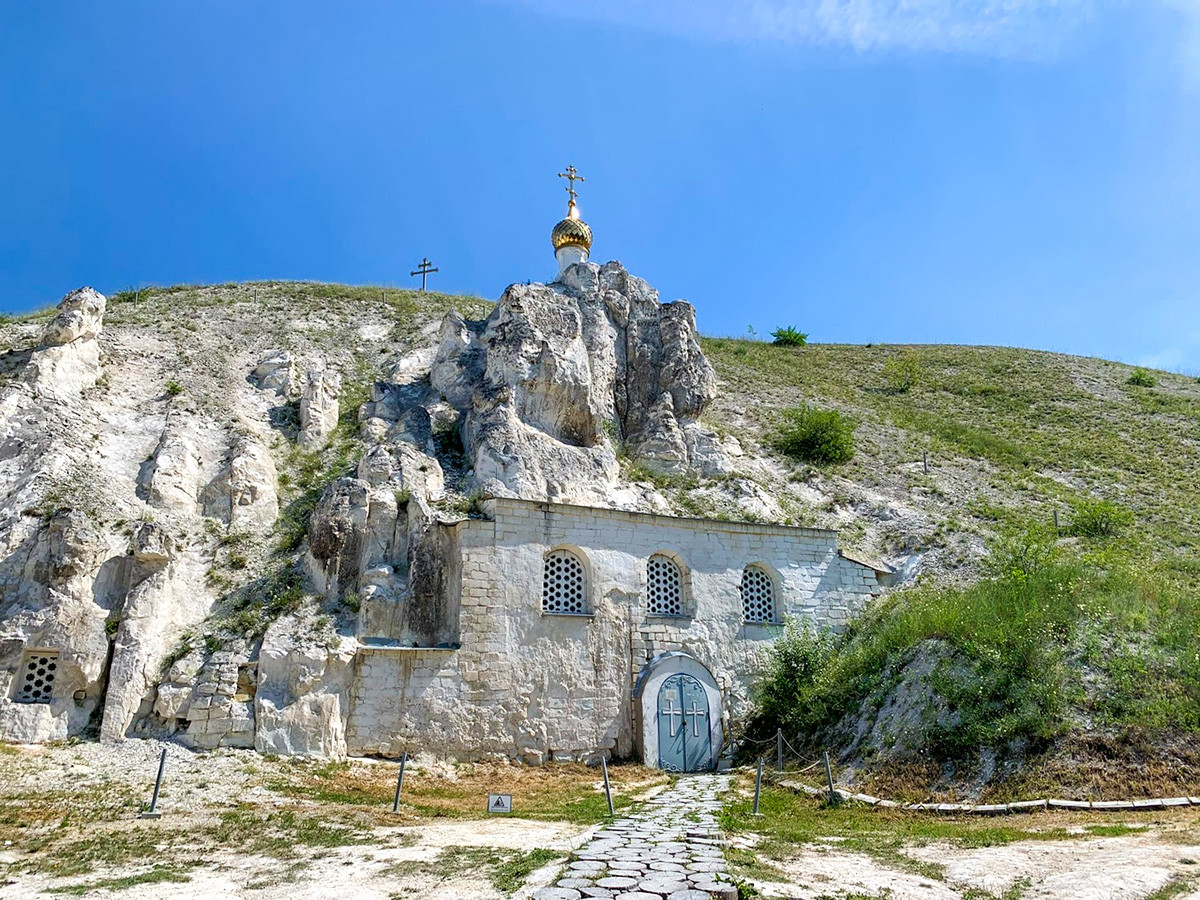
The Church of the Sicilian Icon of the Mother of God in Divnogorye
Alexandra GuzevaVoronezh Region is home to a unique natural phenomenon, the chalk mountains. Hidden in these mountains is a beautiful place called Divnogorye (from Russian for wondrous mountains) and a secluded Divnogorsky monastery dating back to the 17th century. The name of the place speaks for itself, the views and scenery here are indeed amazing.
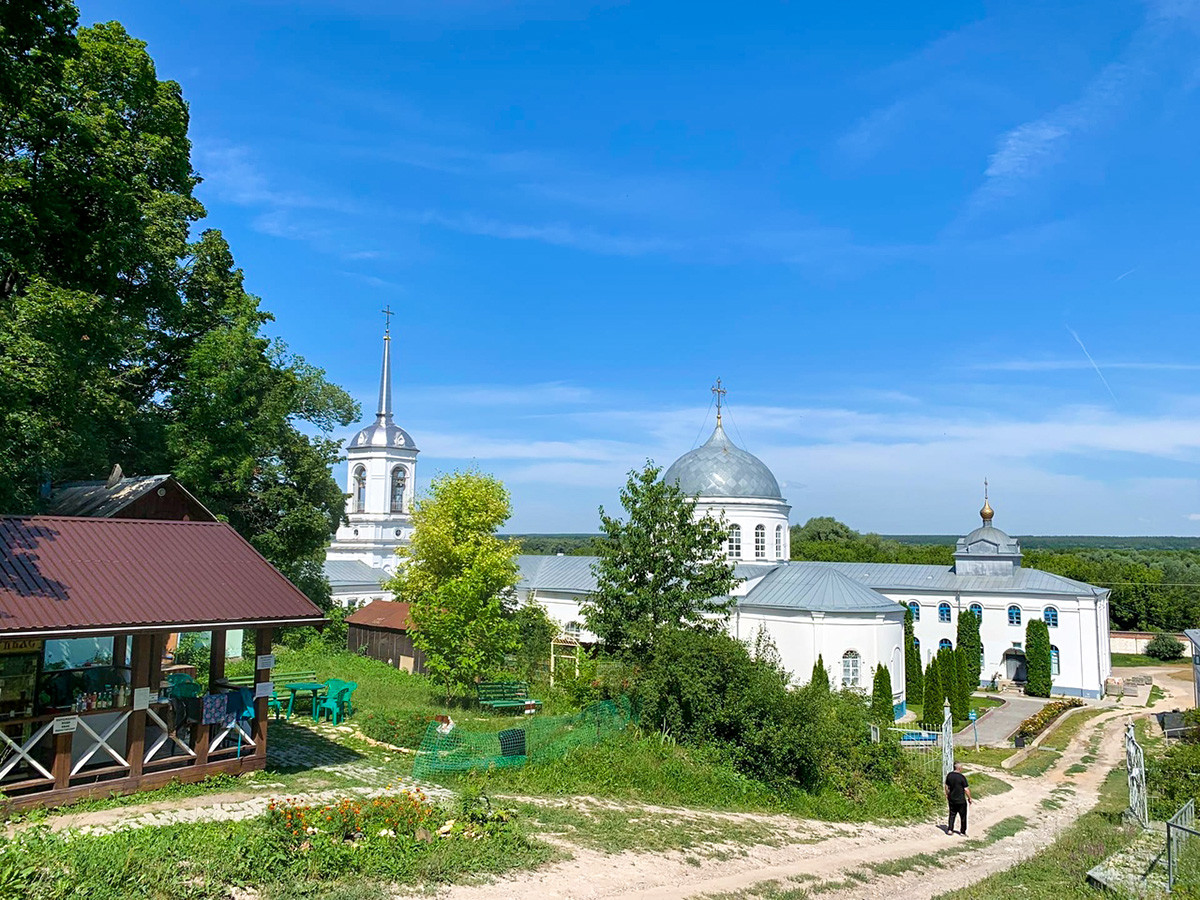
The Divnogorsky monastery
Alexandra GuzevaThe only way to get to the monastery is by foot, furthermore, the way back will be uphill. But what wouldn’t one do for the sake of a perfect Instagram shot with the monastery’s main attraction in the background - the Church of the Sicilian Icon of the Mother of God, which is hewn out of the chalk rock! It is an amazing place, the likes of which you are unlikely to find anywhere else in Russia (in a way, it is not unlike ancient Petra in Jordan).
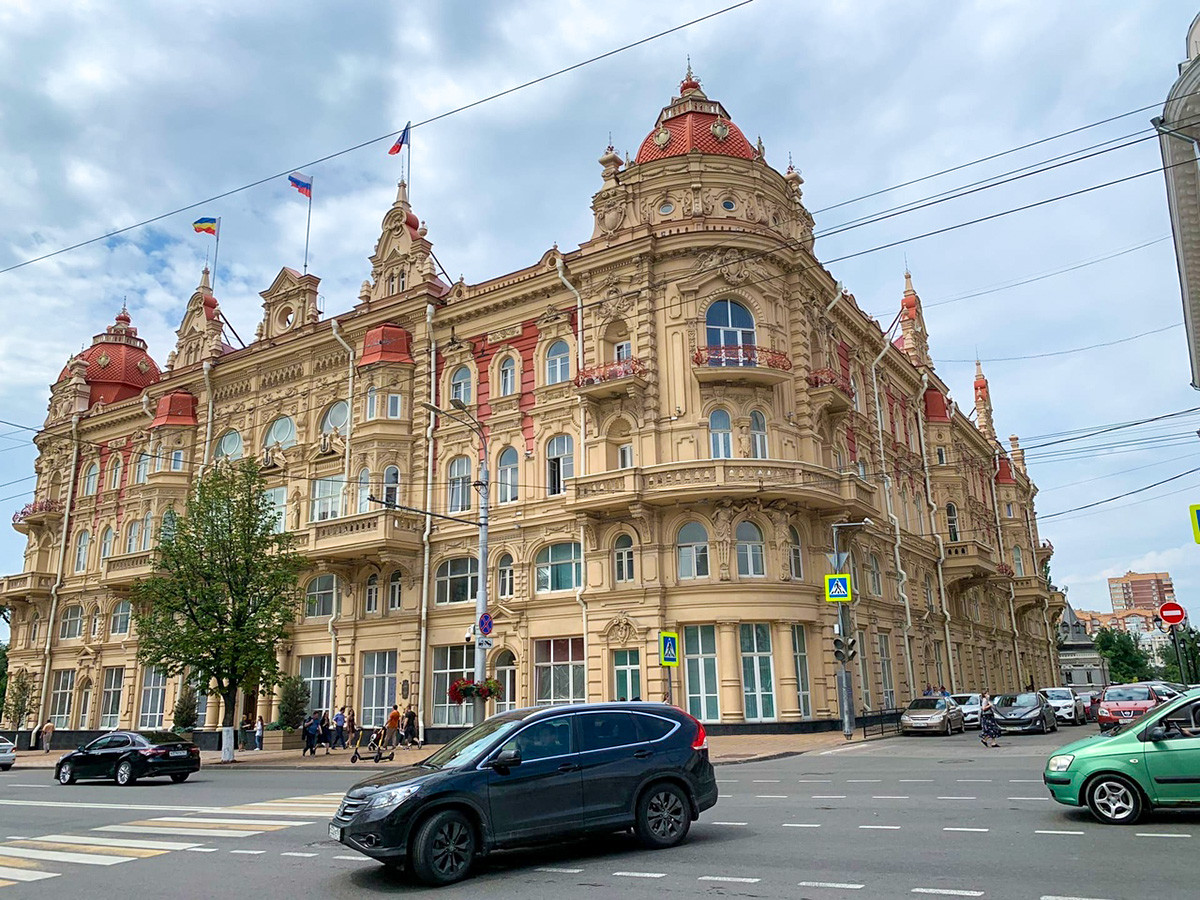
The Rostov City Hall
Alexandra GuzevaRostov-on-Don is a place that will not leave anyone indifferent!!! It hits you with its heat and incredibly lush greenery. There is a promenade on the long embankment of the Don full of cafes, street musicians and strolling crowds.
Rostov is simultaneously a little shabby, a bit like Naples, but is also full of beautiful historical buildings and pedestrian zones... almost like Moscow. A must for any visitor to Rostov is to try local crayfish, which is served in many restaurants here (for example, Raki i Gady (Crayfish and Reptiles)).
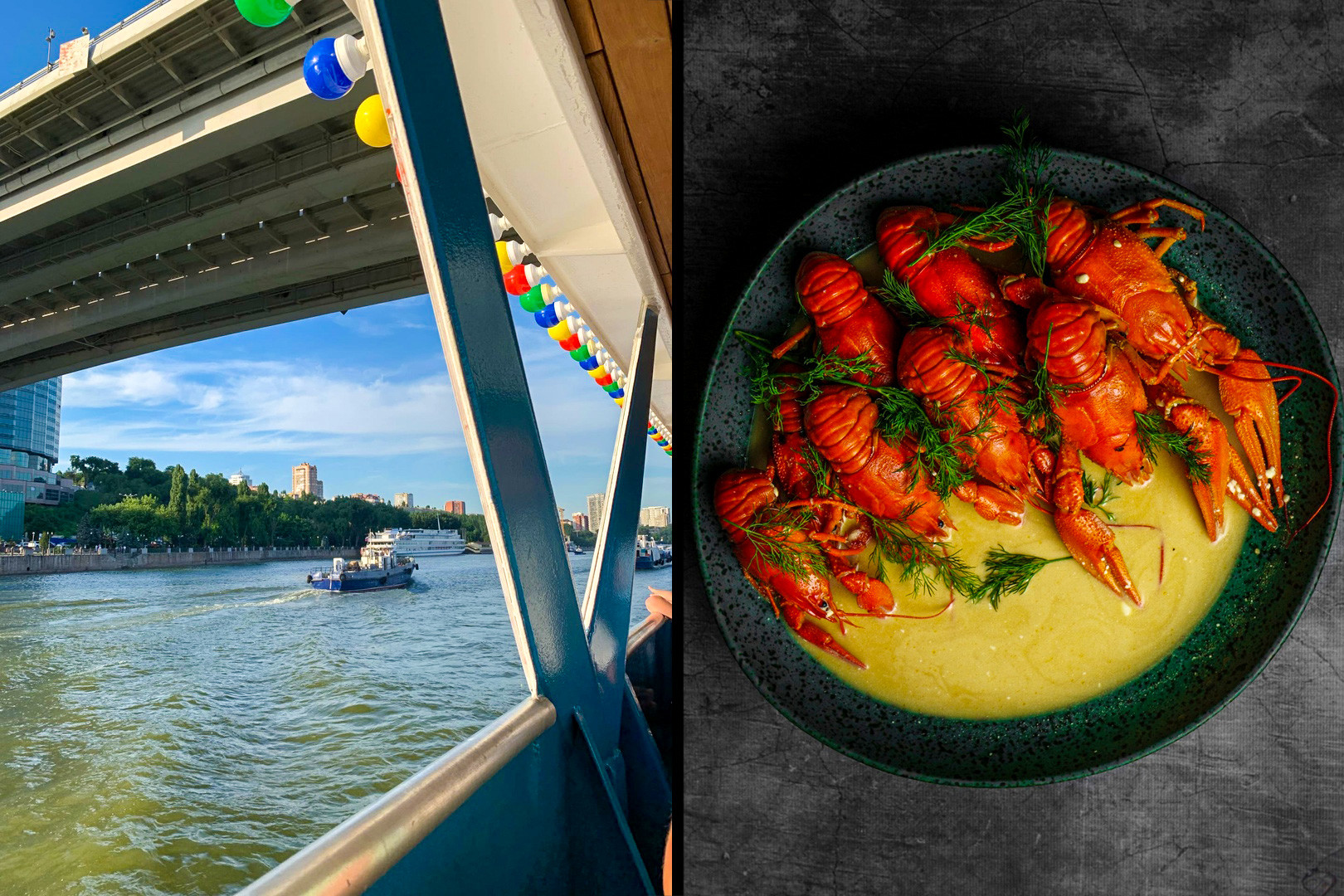
The Don River and the local speciality, crayfish
Alexandra Guzeva; Raki i Gady restaurantHere, too, you can take a boat trip along the Don and then have a swim on the other bank of the river from the city center.
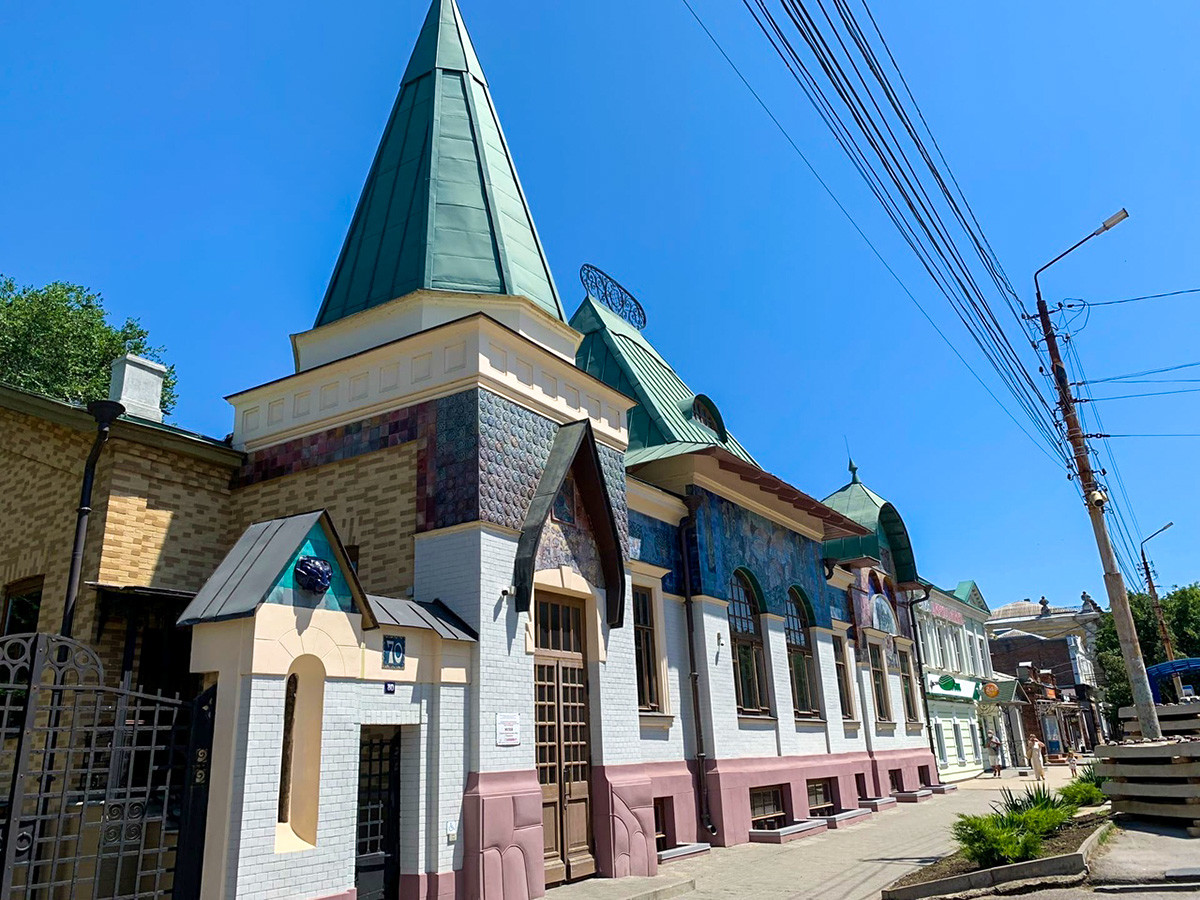
The Sharonov mansion built in Art Nouveau style is a small copy of the Moscow's Yaroslavsky railway station
Alexandra GuzevaIn one comedy show, the city was nicknamed “handsome Taganrog” and the name has stuck. The city was founded by Peter the Great in 1698 and became the first base of the Russian navy, as well as the first city to be built according to a regular plan. You could say that Peter used Taganrog as a training ground before the construction of St. Petersburg.
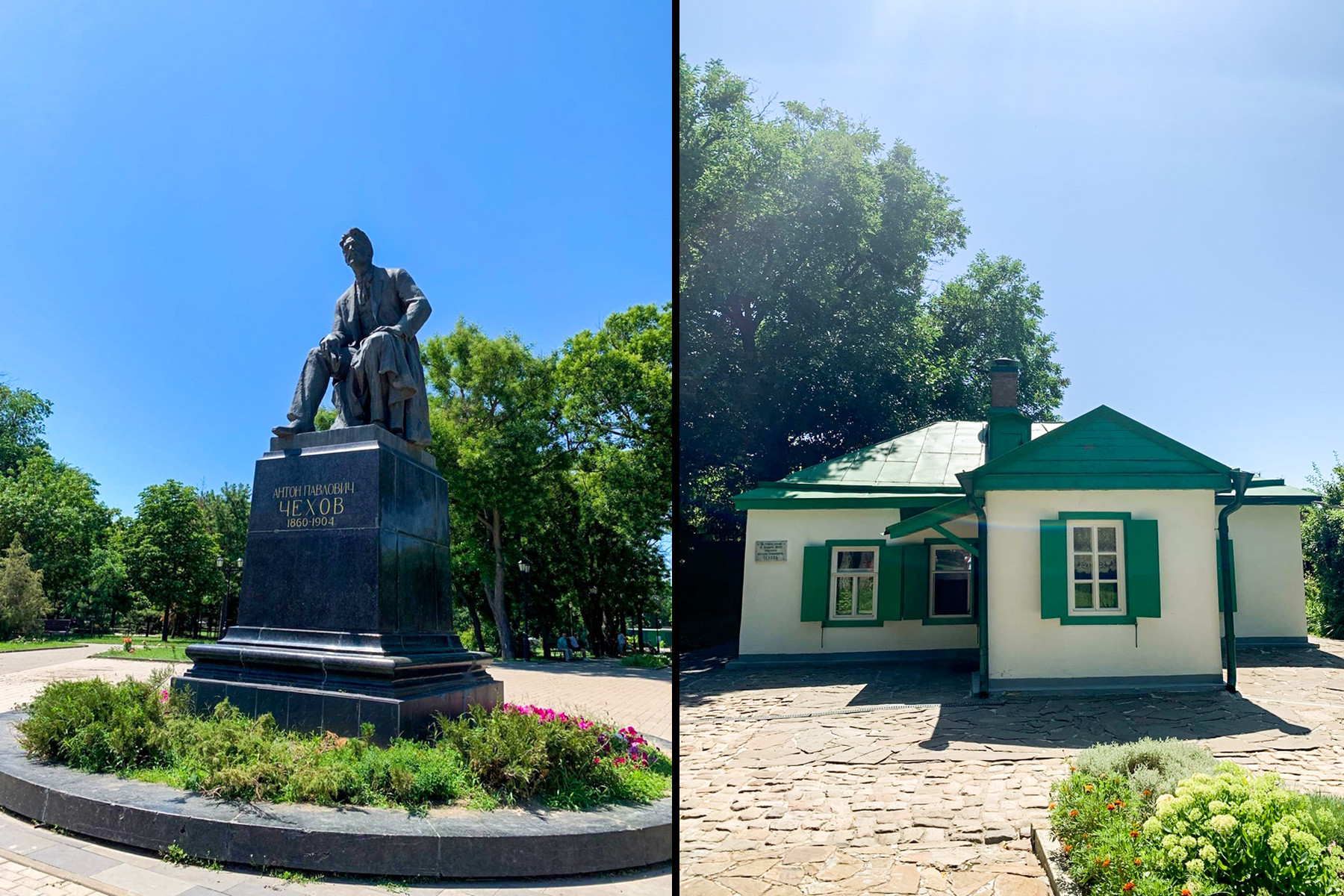
Anton Chekhov's monument in Taganrog and the house where he was born
Alexandra GuzevaIn the 19th century, Taganrog became a major port and trading city and wealthy merchants built themselves houses here according to the latest fashion. That is why, walking the streets of this now provincial city, you will not stop wondering at its incredible mansions built in a variety of styles from Art Nouveau to classicism to eclecticism. It is simply amazing! One of the strongest impressions of Taganrog for me was the tiny house where Anton Chekhov was born and raised.
It goes without saying that the most popular southern sea for Russians is, of course, the Black Sea. Its long coastline is dotted with numerous resorts. And it is beautiful. However, when we were planning our holiday, a storm and floods were raging on the Black Sea coast, so we prudently decided to go to another sea (which also happens to be much closer to Moscow). I bet you have never been to the Sea of Azov! We first encountered it in Taganrog, but let me tell you more about it.
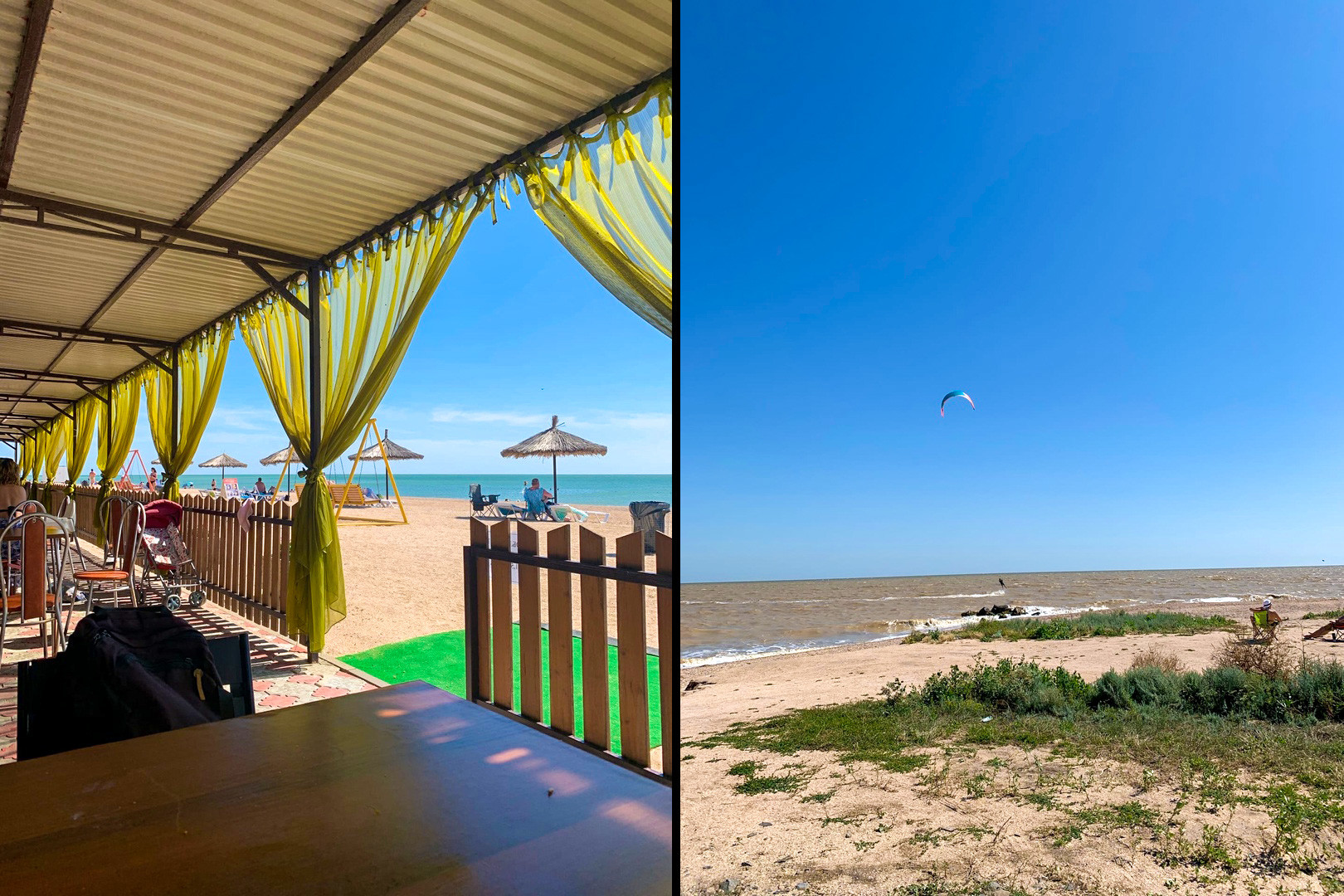
Dolzhanskaya beaches on the Sea of Azov
Alexandra GuzevaIn fact, this is the strangest sea in Russia. Its maximum depth is only 13 meters and it is practically freshwater. That is why in Russia it is affectionately called a big puddle and a child’s sea. There is a theory that in prehistoric times, it did not exist and that it was formed around 5,000 BC by water overflowing from the Black Sea, which just filled this lowland in the Don River delta.
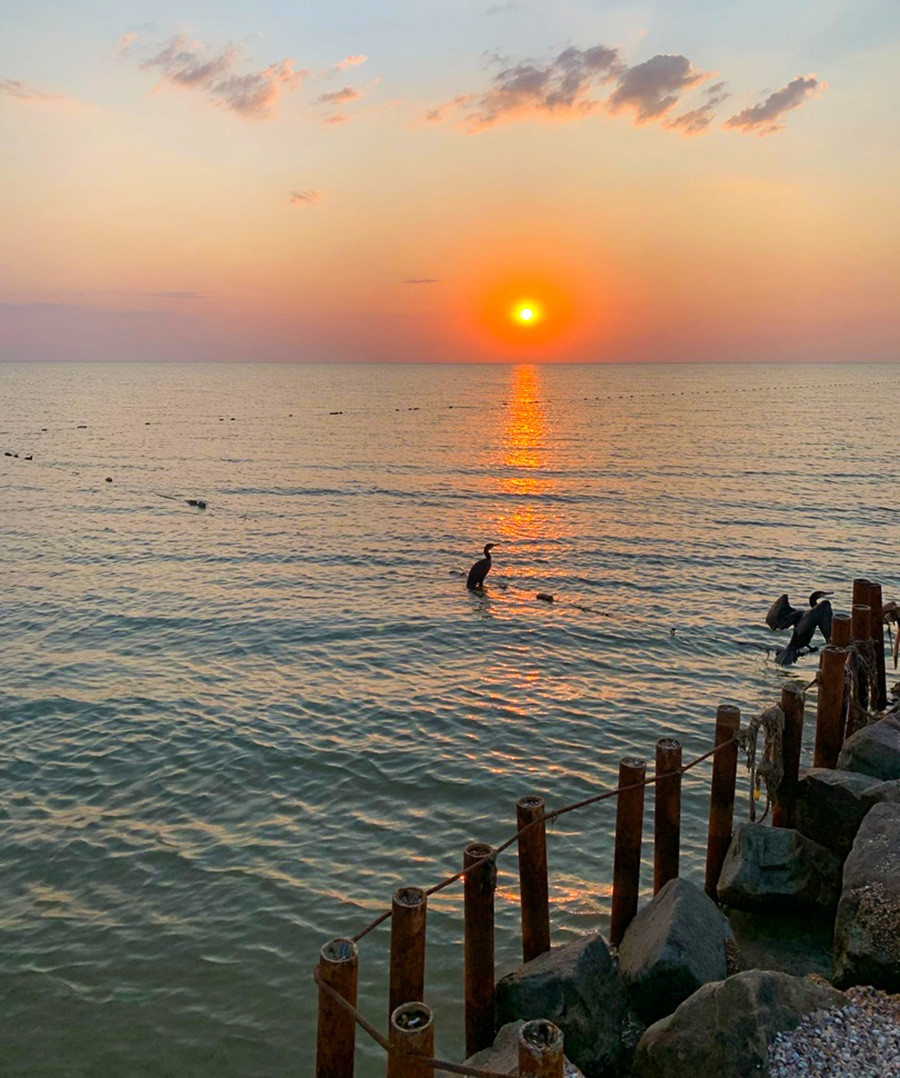
Sunset cormorants
Alexandra GuzevaMany of the resorts on the Azov Sea are located in Krasnodar Territory. It greets visitors with fields of sunflowers and corn and a mercilessly scorching sun. A popular resort on the Azov Sea is the coastal city of Yeysk. But it may be better to leave a crowded city behind and travel a bit further, though it would be difficult to do without a car. For example, a car is practically the only way of getting to the remote village of Dolzhanskaya, which is located on a picturesque spit - in a place where the Sea of Azov meets with the Taganrog Bay. It is windy there, which is why there is a windsurfing and kitesurfing camp on the north side of the spit.
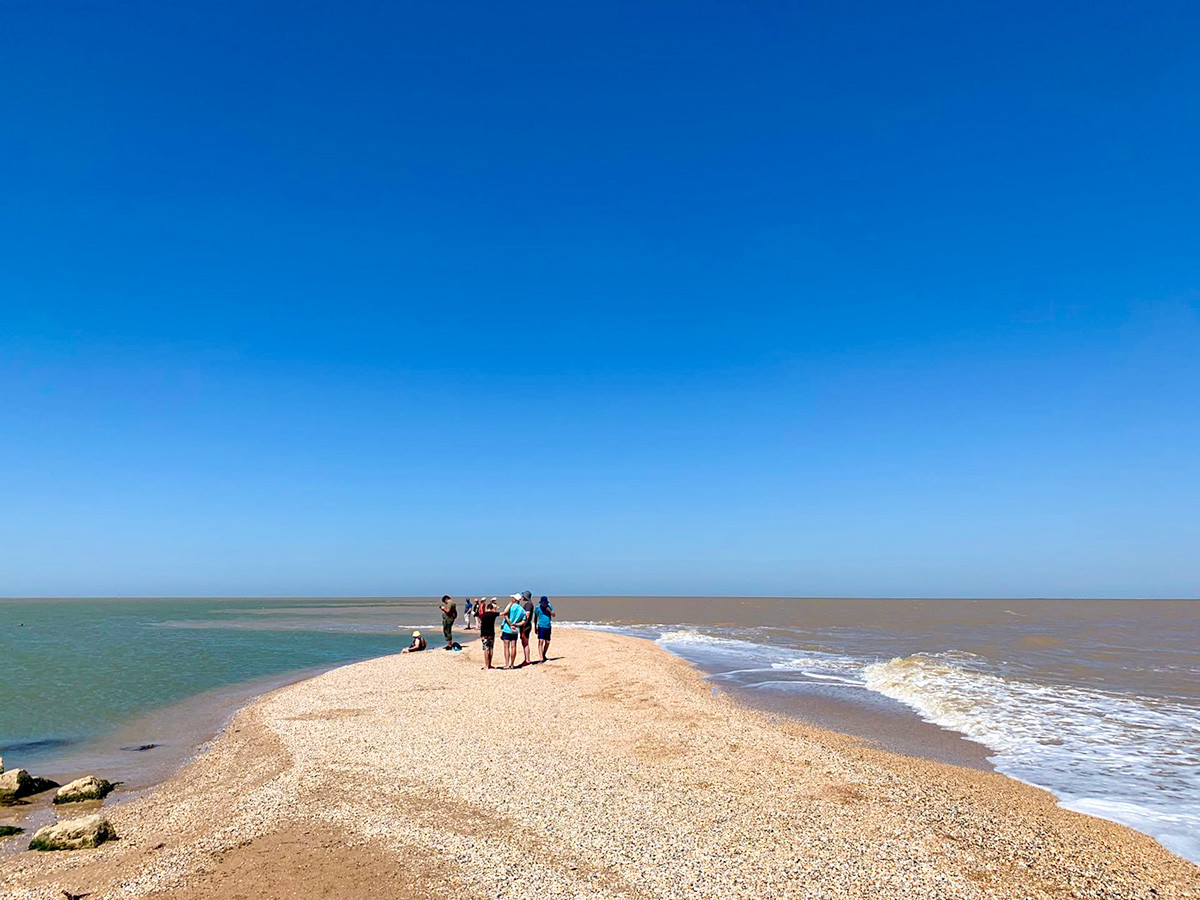
The Dolgaya Spit on the Sea of Azov
Alexandra GuzevaThings to do in a typical Russian sea resort town include: spending time at the local market, bargaining and choosing juicy fruits like cherries, apricots and watermelons. I would advise against buying homemade wine from local residents, but would recommend trying the produce of local winemakers. Typical beach food here are chebureki (filled pies) and boiled corn on the cob with salt, while the best pastime is to watch sunsets on the beach, since in most places here the sun drops right into the sea.
If using any of Russia Beyond's content, partly or in full, always provide an active hyperlink to the original material.
Subscribe
to our newsletter!
Get the week's best stories straight to your inbox